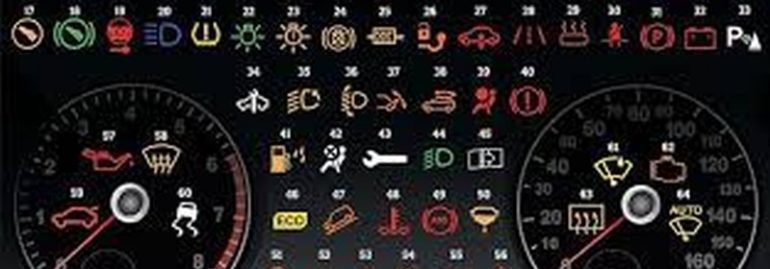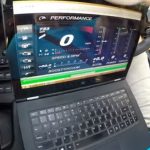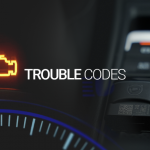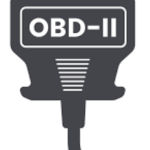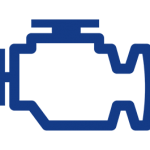Understanding the meaning of an obd2 code can save you money, time, and aggravation. These devices can tell you what code your car has and can even clear those codes, too. They are very easy to use and cost little. They simply plug into the obd2 port located below the steering wheel. You can use the code reader to see the codes, and scroll through them if you want to see more details.
Diagnostic trouble codes
When you see the check engine light on your dashboard, you might be wondering what it means. Basically, the check engine light is indicating a fault in the engine management system or another part of your vehicle. If you can’t determine what is wrong, you need to understand Diagnostic Trouble Codes, or DTCs. These are five-digit codes that identify a specific problem with your car and are displayed on your car’s dashboard when you connect an OBD scanner to it. The first three digits are the DTC (Digital Trouble Code) number, and the last two digits are the manufacturer’s code.
While the check engine light can mean several things, DTC codes will help you to pinpoint the problem and get a more accurate diagnosis. In addition, DTC codes are sent by the car’s onboard diagnostic system (OBD), which allows you to identify specific problems and fix them before they can cause further damage. There are many resources available to help you diagnose your car’s problem with DTCs, so you should consider this information before fixing your car yourself.
Once you understand what these codes mean, you’ll know where to start your car’s repair. To do this, you’ll need a diagnostic scanner. Many cars today have OBD-II systems, which monitor major parts of the car and generate trouble codes. Knowing how to interpret these codes will help you pinpoint a problem more effectively and minimize the downtime that results. You’ll also be able to use them to email a technician, so they can help you diagnose your car with ease.
While you shouldn’t ignore any diagnostic warnings, it’s important to remember that these trouble codes are only temporary, and can even indicate larger problems. You should understand what these codes mean and what they indicate before allowing the technician to fix it. By understanding how these codes work, you can take charge of your car’s maintenance and help keep it in top shape. You’ll be empowering yourself and your car when you learn more about trouble codes.
There are two types of DTCs: generic and manufacturer-specific. The generic codes apply to most vehicles, while the manufacturer-specific codes are specific to your car model. Manufacturer-specific codes are generally more severe and require a vehicle mechanic. The generic codes are generally easy to interpret and are more common. The manufacturer-specific codes are usually easy to read and interpret with the use of intuitive, user-friendly tools. These codes can also tell you whether you’re dealing with a problem with your vehicle’s electrical system or if it’s just a generic issue.
If you see the message “dtc” on your car’s dashboard, you’ve encountered a vehicle problem. A technician will look for a DTC to determine the problem. These codes are stored in the vehicle’s onboard computer system and can be used in diagnostics to help determine the cause of the issue. Thankfully, these codes are updated frequently so you can use them in your own vehicle’s repairs. So, next time you’re looking for the solution to your car’s problems, remember that you can always trust these diagnostic codes.
Meaning of obd2 code
If you’ve been dreading going to the car repair shop, the meaning of an OBD2 code may be all too familiar. Though these codes are commonly confused by everyone, they don’t always mean that a part needs to be replaced. Instead, they indicate a system failure that needs further diagnosis. Unfortunately, some auto parts stores only make things worse by trying to sell you the wrong part. If you’re not sure what these codes mean, watch some nonda Auto DIY Center videos.
The P0122 code indicates that the TPS voltage is below the minimum level. This could be as low as 0.20 volts. To determine the cause of this code, you need to check the wiring of the TPS sensor. If it’s not attached securely, it may be a sign of a wiring problem. The P0131 code is due to a low voltage condition in bank 1 sensor.
When looking up the meaning of an OBD2 code, it’s important to remember that each digit indicates a different system problem. Some OBD codes start with a letter, such as ‘P’, which means powertrain. These codes are common across most vehicles and can be assigned a common fault message. On the other hand, some codes begin with a ‘1’ and are specific to that car brand.
The DTC code itself can have any number of meanings. In general, the first letter of the code represents the manufacturer, while the last three digits represent the fault code. Each code represents a different system or circuit within the car. In addition, OBD codes can refer to other types of codes. They include the engine’s fuel-air ratio, emissions, fuel economy, and more. Fuel injector codes, for instance, are related to problems with the fuel injectors, while ignition codes are triggered by issues with the spark plug.
To know the meaning of an OBD code, you must know its code-reporting format. The OBD2 port is usually located beneath the dashboard and steering column. However, some models can have an OBD2 port in areas four and nine. A simple wired hand-held scanner can give you a list of all the codes on the car. To avoid costly errors, research the code online before trying to fix it yourself.
Usually, an OBD code is an error code caused by a malfunction in a car’s engine. A P0201 code, for example, indicates a malfunction in cylinder 1 of the injector circuit. If you’re not sure what this code means, consult your mechanic. This code is useful for diagnostic purposes. If you don’t know the exact problem, you may want to take your car to a mechanic who knows how to solve it.
Common causes of obd2 code
If you are getting an OBD2 code on your car, you may be wondering what to do. While most people who encounter this code talk to family and friends, most of them have very little knowledge about the codes themselves. Below, you’ll find links to diagnostic information about common causes of this code. We’ve also listed the most common car problems that cause an OBDII code. Check these out and make your car run like new!
First, you need to identify the type of code that your vehicle is displaying. If it is P0122, this indicates that the TPS voltage is below the minimum value. This could be as low as 0.20V. To find the exact code, look for signs of poor connections or loose connections in the wiring. If the code doesn’t match the diagnostic chart, it’s likely a sensor malfunction.
Most OBD2-II codes contain a generic ‘P’ code that’s easy to identify with a scan tool. If the code has a letter prefix, the next digits will tell you more about the problem. First digit specifies the type of code, the second digit indicates the system it’s affecting, and the last two digits are the fault designation.
While this information doesn’t help you pinpoint the exact problem, knowing the cause of the check engine light can give you peace of mind. If your car has a code for a particular component, knowing what system is causing the problem can save you a lot of time. Some car problems are very simple, such as a loose or missing gas cap. Nonetheless, most of these problems will require the expertise of a mechanic.
A diagnostic trouble code is a series of five letters and numbers that your car’s on-board computer (OBD) system generates. The code helps you identify which part of your car is malfunctioning. If you are reading a P0442 code, for example, you are likely suffering from a leak in the evaporative emission system. These diagnostic trouble codes are generated by the same mechanism that detects problems with your car, and they will be stored in the on-board computer management system.
If your car’s OBD code is P0420 or P0430, it’s most likely that it’s your catalytic converter. If the converter is faulty, you’ll notice a foul smell coming from the exhaust. Your engine may also run poorly or misfire. This code can be caused by many problems, and you’ll need to get it fixed to restore it to normal.


